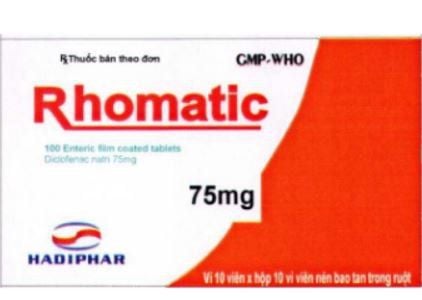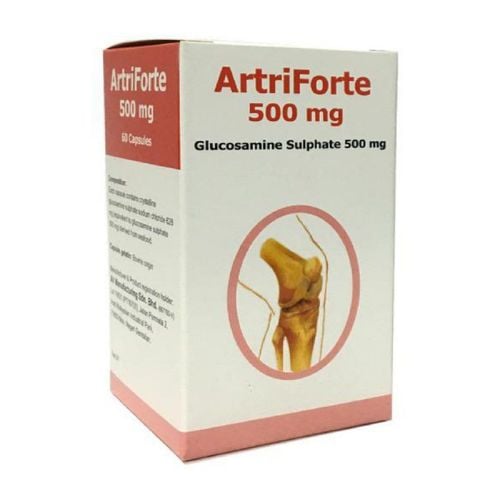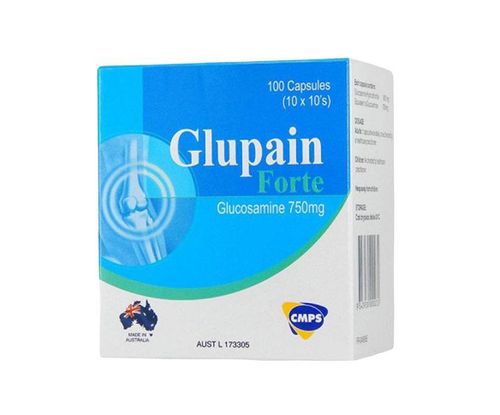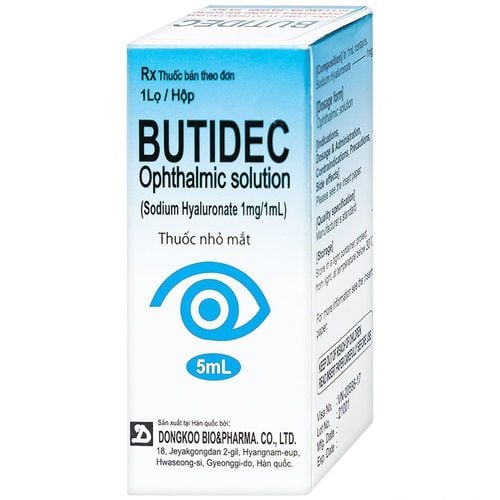This is an automatically translated article.
Rasanvisc is often used to treat pain caused by osteoarthritis of the knee, knee or pain due to knee injury,... Patients need to strictly follow the Rasanvisc drug instructions that the doctor recommends in order to avoid the risk of experiencing side effects, and help the drug promote its optimal therapeutic effect.
1. What is Rasanvisc?
Rasanvisc belongs to the group of non-steroidal anti-inflammatory, antipyretic and analgesic drugs, used mainly to reverse pain conditions caused by knee osteoarthritis or knee injury,... Rasanvisc is manufactured and researched. successfully by IDT Biologika GmbH – Germany in the form of a solution for injection, each box includes a 20ml ampoule.
The main active ingredient in Rasanvisc is Sodium hyaluronate with a concentration of 20mg and a combination of some other auxiliary excipients, including: Sodium chloride, Sodium dihydrogen phosphate, Sodium monohydrogen phosphate and distilled water for injection. The Na Hyaluronate injection solution in Rasanvisc has the ability to increase the elasticity and viscosity of synovial joints, thereby effectively improving the motor function of the joints.
According to research, Rasanvisc has an effective analgesic effect, helps improve motor function thanks to the mechanism of increasing viscosity, and brings a positive effect to the synovial exchange process. The injection of Sodium Hyaluronate into the joint can significantly improve the quality of synovial fluid as well as its viscosity. This also helps to reduce stress and impulses caused by mechanical impact. Patients can get pain relief and increased mobility after only 5 injections and last for about 6 months.
2. Indications and contraindications for the use of Rasanvisc
Doctors often prescribe Rasanvisc for the following cases:
Treatment of pain caused by osteoarthritis, knee injury or knee degeneration. Treatment of pain due to dysfunction of joints. Treatment of patients undergoing orthopedic surgery. Do not use Rasanvisc for the following patients without consulting a doctor:
Patients with hypersensitivity or history of allergy to the active ingredient Sodium hyaluronate or any of the excipients contained in the drug . Patients with hypersensitivity to many other drugs. Do not inject Rasanvisc directly into the knee joint for people with infection or skin disease at the injection site. Rasanvisc is contraindicated for children, people with Bechterew's disease, rheumatoid arthritis, pregnant women or nursing mothers.
3. Dosage and how to use Rasanvisc
3.1. Dosage of the drug Rasanvisc Conduct injection into the joint to be treated with the recommended dose of 20mg / 2ml / time / week. A course of treatment will use from 3 to 5 Rasanvisc syringes. After 6 months, the patient can be repeated a course of treatment as above.
In fact, it is possible to use Rasanvisc at the same time to treat many different joints. Patients should avoid movement of the injected joint for 48 hours and do not perform normal activities.
If joint effusion occurs after injection, the doctor will conduct aspiration to reduce the effusion. Some other measures can also be applied such as rest, corticosteroid injection or ice application. Treatment with Rasanvisc can be restarted after 2-3 days.
3.2. How to use Rasanvisc effectively Rasanvisc is made in the form of an injectable solution, so it will be injected into the joints. Since Rasanvisc is packaged in a single ready-to-use dose, the syringe contains 2ml of sterile solution, so no dilution is required.
After opening the cap, Rasanvisc should be used immediately and injected exactly into the joint to be treated. The injection site is usually the most favorable, and can be injected in the side or in the middle of the joint.
Note, when injecting Rasanvisc should be done in completely sterile technical conditions. To ensure sterility of the injection site, the doctor will clean it with an antiseptic. If joint effusion occurs, it will be necessary to conduct aspiration with specialized tools before starting Rasanvisc injection. Joint effusion should be aspirated dry to avoid affecting the effect of Rasanvisc.
On the other hand, before injecting Rasanvisc, the doctor will carefully check the patient's joint fluid and infection status. In addition, Rasanvisc should be examined visually to detect unusual signs or drug color changes.
4. What side effects does Rasanvisc cause?
During treatment with Rasanvisc, patients are at risk of some of the following side effects:
Common side effects: Pain at the injection site, facial redness, skin redness or a feeling of hot flashes . Rare side effects: Swelling, synovial edema, therapeutic joint regurgitation, synovitis or difficulty in movement. Patients should tell their doctor as soon as possible if any of the side effects mentioned above occur while taking Rasanvisc. Early detection and treatment of symptoms after injection of Sodium Hyaluronate solution will help patients avoid other health risks.
5. Some important notes when using Rasanvisc
The following are some general recommendations of doctors for most patients planning or being treated with Rasanvisc:
Patients need to have a thorough examination before taking Rasanvisc to identify the signs of inflammation. Arthritis, and helps the doctor assess whether the patient should be treated with Rasanvisc immediately when there are symptoms of infection. Care should be taken when injecting Rasanvisc into the joint socket. The drug needs to be injected precisely into the joint cavity, absolutely not into the surrounding tissues or blood vessels. Treat joint effusion before giving the patient sodium hyaluronate injection. Aseptic stitches need to be strictly performed when injecting Rasanvisc. Patients should avoid vigorous movement after injection. Ice can be applied to the affected joint for about 5-10 minutes to reduce swelling and pain at the injection site. Rasanvisc should only be used when the solution in the drug reaches standard clarity. Avoid using in combination or mixed with other drugs in the same syringe for intra-articular injection. Use caution when injecting Rasanvisc to people who are allergic to drugs, patients with kidney or liver failure. Use caution when using Rasanvisc for the elderly because the physiological function of this subject has been significantly reduced. Store Rasanvisc injection at a temperature below 25 degrees Celsius, away from direct light or high humidity. Do not use previously opened syringe or liquid packaging. Interactions of Rasanvisc with other drugs:
Currently, there is no specific information on the incompatibility of Rasanvisc with other injectable solutions. Patients can relieve pain in the first days of treatment by using it in combination with anti-inflammatory drugs or pain relievers depending on the doctor's instructions. Avoid using Rasanvisc at the same time as skin cleaning solutions containing Ammonium salts. This is because hyaluronic acid has a risk of precipitation. The best way to avoid potential interactions between Rasanvisc and other medications is to tell your doctor about any medications you are taking. These medications may include over-the-counter drugs, herbs, multivitamins, mineral supplements, or supplements. The doctor will help the patient assess the risk of drug interactions and recommend appropriate medication. Rasanvisc is a medicine used to treat pain caused by osteoarthritis of the knee, knee or pain due to injury in the knee,... Because this is a prescription drug, patients should not use it themselves, but need to consult a doctor. doctor before use to ensure health safety.













